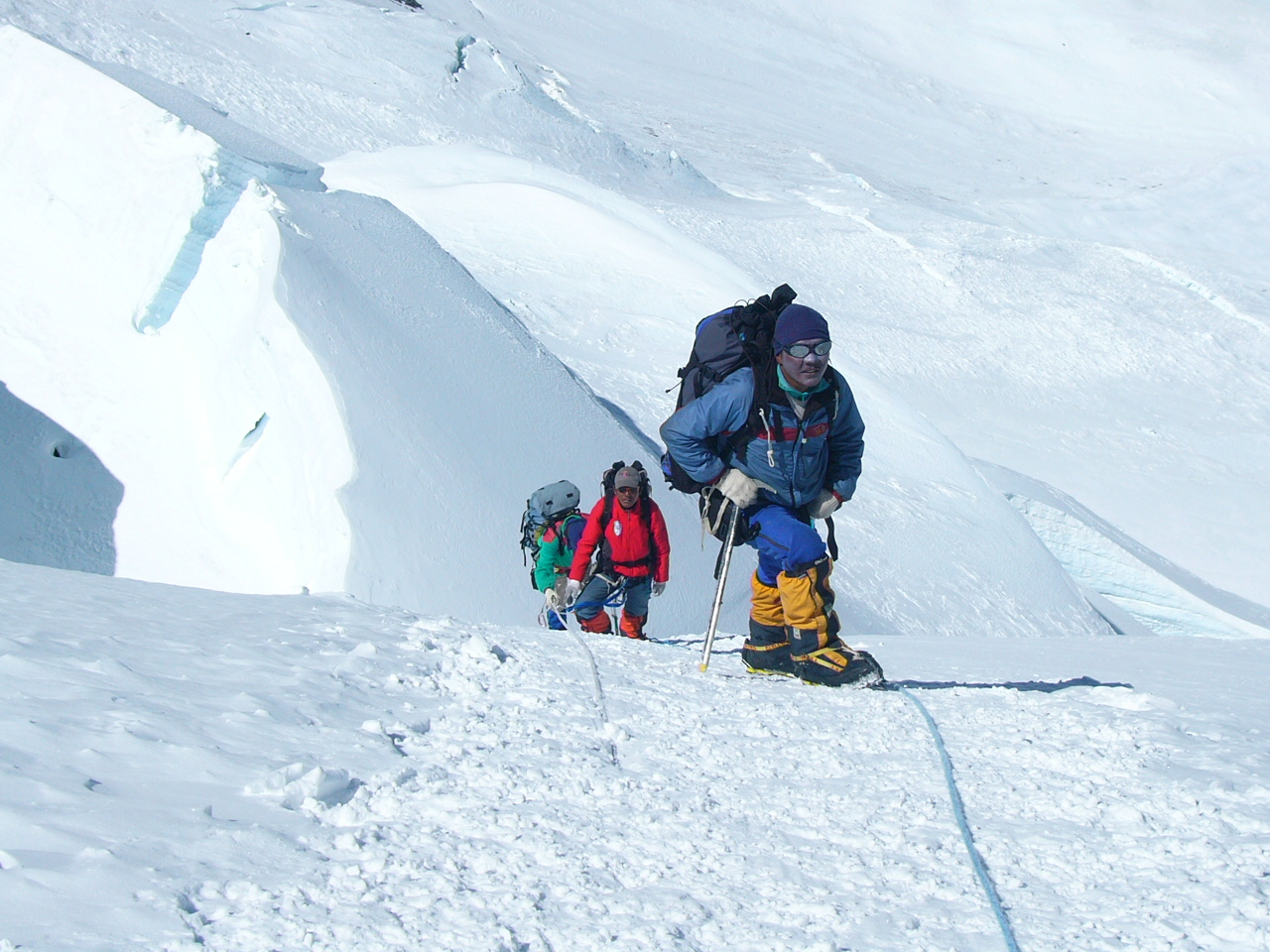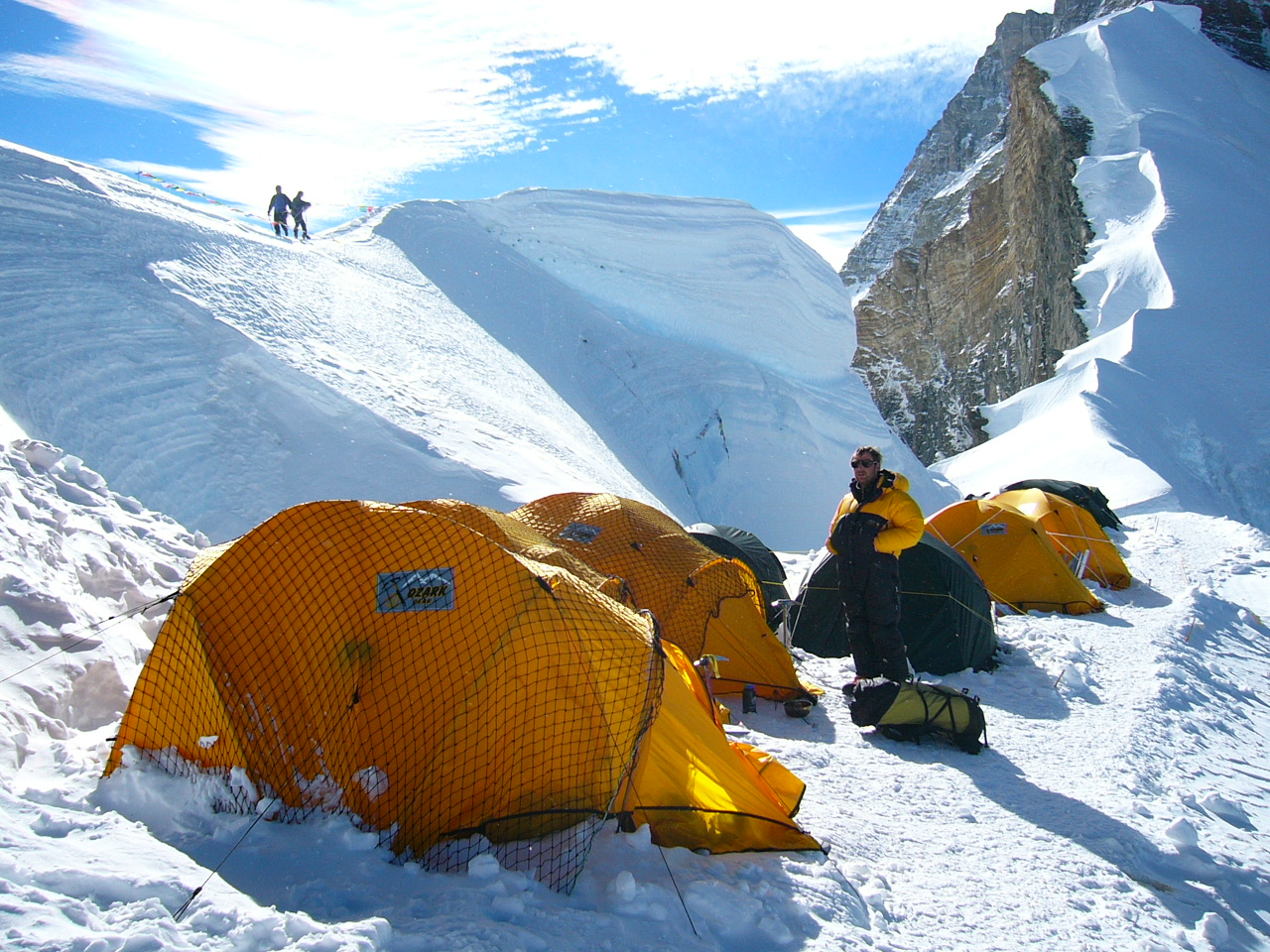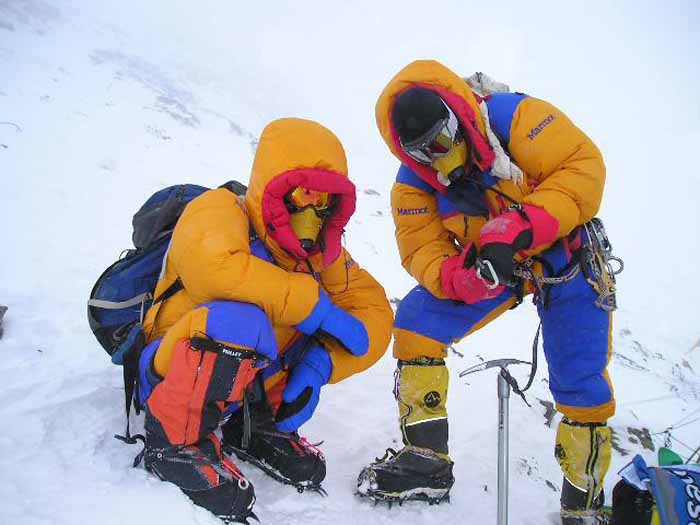
Basic costs from: 30.420,00 €
Ab Fullservicepreis: 59.620,00 €
Basic costs from: 25.500,00 €
Ab Fullservicepreis: 44.500,00 €
Ab Fullservicepreis: 3.950,00 €
Ab Fullservicepreis: 9.250,00 €
Ab Fullservicepreis: 25.000,00 €
Fascination Everest: Are you looking for the ultimate challenge? - With experienced partners and flexible climbs at fair conditions, SummitClimb.de is the best expert operator for Mount Everest. To climb Everest two routes have established as "normal": the southern ascent from Nepal already used during the first ascent by Hillary and Tenzing in 1953, and the ascent from Tibet over the north ridge (currently closed, as in China).


Mount Everest 2021: South and Main Summit, Felix and Renji Sherpa on 1-June 2021 after a 3-day ascent / fastest expedition of that season (5 days).
To climb Everest you should inform yourself that you are exactly with whom and if you are up to the challenge. On this page you find some more information:


(1) Everest Tibet: Northside, 2. Step at 8,610 m. (2) Everest Nepal: Southridge at the Hillary Step at 8,790 m



Our experience at Mount Everest goes back to 1991 when Daniel Mazur climbed Mount Everest. Felix Berg, CEO from our Swiss company Summit Travel, has climbed Mount Everest aged 23 years back in 2004, Experience both from the north sides and from the south side of Mount Everest, some of the most experienced guides, sherpas and leaders Logistical know-how, personal commitment, an unbeatable price-performance ratio should make us your choice for Mount Everest.
We finished a very sucessful 2021 season in Nepal with summits on 24. May and 1. June, including a 5-day (Lukla to KTM) speed expedition, 100% safe and sucessful, and had good Everest seasons in 2022 & 2023 with standard expeditions lead by Daniel Mazur.



Two routes have established as "normal" to climb Mount Everest: the southern ascent from Nepal, already used during the first ascent by Hillary and Tenzing in 1953, and the northern ascent from Tibet (China).


Follow in the footsteps of the 1. ascent: The slow ascent through the green Khumbu valley offers a nice and good acclimatization. The route of the ascent starts just above the base camp at 5,700 meters altitude with the infamous Khumbu Icefall, a good test and training for the climb. The normal route from Nepal is longer and objectively more dangerous, but technically less demanding than the northern ascent. It is particularly suitable for climbers who are technically less experienced. The summit ascent from the South Col at almost 8,000m (26,000 ft) height is long and exposed. After the South Summit, you climb the famous '"Hillary Step" to stand on top of the world. Please find more information on:
Here is the brief overview between expeditions from Nepal (South) and expeditions from Tibet (North):
| NEPAL - South | TIBET (CHINA) - North |
| 6,416 ascents (64%) | 3,661 ascents (38%) |
| 135 with SummitClimb | 152 with SummitClimb |
|
|


Here you can also find information about our COVID-19-evaluation for Nepal and Tibet. Mount Everest is on the border of China with Nepal and accordingly look at the development for those two countries.
Restrictions: None.
China opend again in the fall of 2023 for climbers. Restrictions: tba.
The season is 100% planned and prepared. On the part of the number of participants this expedition is confirmed.
The season is 100% planned and prepared. On the part of the number of participants this expedition is confirmed.
Overview: Covid-19-Pandemic & Everestflation
Inquiries for 2025 and further we gladly accept and help with the long-term preparation. The pricing is still subject to too many unknowns for a fixed offer due to the climbing fee (permit), currency fluctuations, and inflation.
Dear climber, our home valley lies in Switzerland so all our information is originally in German. Yet, we speak English, French, Polish, Spanish, Russian, Swahili, and even Mandarin. We will be happy to assist you.